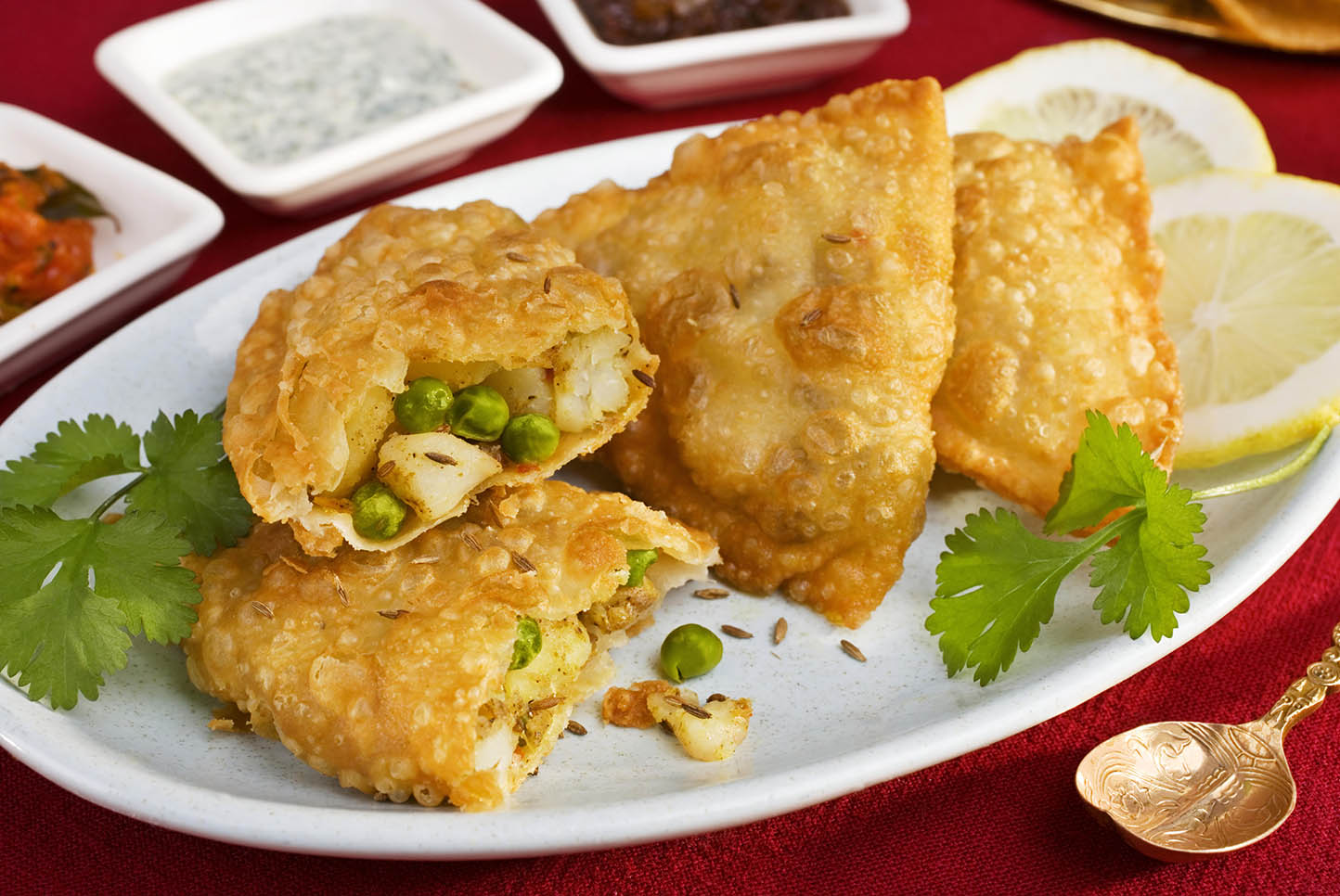Some of the world’s most flavorful and exotic spices are used in Indian cuisine with colorful and quite tasty dishes. Vegetable samosas are an example of this, an Indian appetizer that balances the level of calories and fat within healthy standards.
Nutritional information
A vegetable samosa weighing approximately 40 g contains about 80 calories, 11 g of carbohydrates, 3 g of fat, 2 g of protein, 1 g of fiber and 1 g of sugar. It should be noted that it is the ingredients contained in samosa that determine its nutritional content, and vegetarian samosas are not all made the same way. A samosa with butter, stuffed with potatoes and fried in oil, will be richer in fat, carbohydrates and calories than one based on thin puff pastry or peas and carrots stuffed with low calorie and cooked wonton.
Advantages to health
The choice of vegetable samosas, instead of sweet meat, will reduce the intake of saturated fats and calories and will provide more vitamins and minerals. According to several studies, and as is well known, increasing the amount of vegetables you eat can help reduce the risk of chronic diseases, including cancer, heart problems, stroke, hypertension, bone loss, diabetes, kidney stones and hypercholesterolemia. In addition, you will have a good dose of fiber by eating vegetables, which can improve the health of your digestive system and help you lose weight or simply maintain it.
Nutritional Disadvantages
Samosas should never be taken as a healthy food. Despite the nutritional benefits offered by vegetables, a vegetarian samosa made with lots of butter or oil can be high in cholesterol and saturated fats. Samosas fried, even in a light recipe, each samosa of about 5 cm (2 inches) contains 160 calories and more than 5 grams of fat. The largest samosas sold in restaurants and cafes could have even higher values, plus more sodium and cholesterol.
Considerations
A vegetable samosa may be a relatively nutritious snack, but only if it is low in fat, sodium and cholesterol. If you have the opportunity, confirm the nutritional information of a samosa before you buy it. If not, make your own samosas. This will allow you to control the number of calories and nutritional value. More importantly, learning how to use a variety of vegetables, fruits and other healthy foods to meet your nutritional needs instead of trying to get all of your essential nutrients through prepared foods such as samosas is always a big plus.





